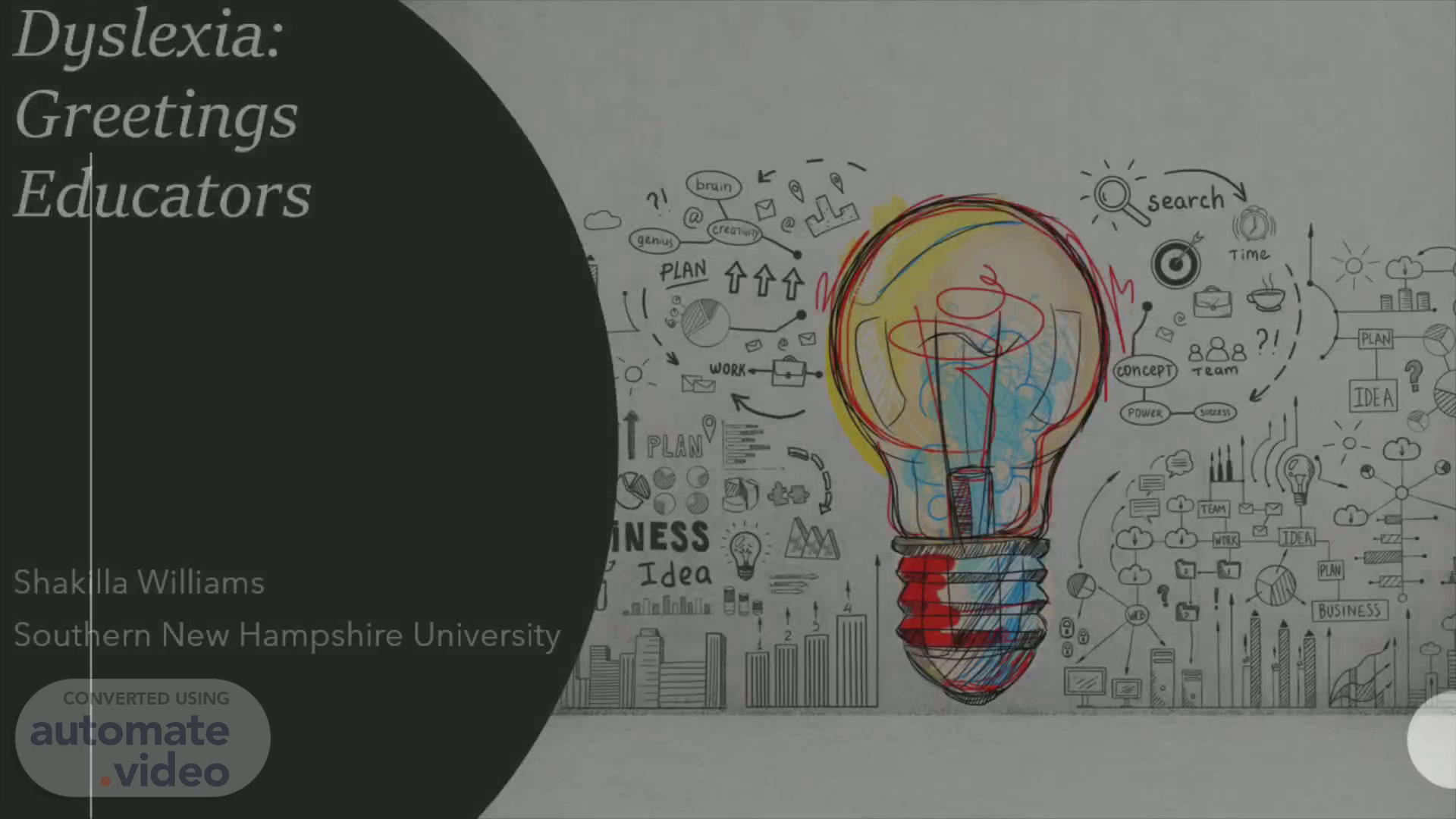
Dyslexia: Greetings Educators
Scene 1 (0s)
[Virtual Presenter] Greetings Educators. It is a great horn to stand in front of you all today and talk about DYSLEXIA. How is everyone doing today?.
Scene 2 (16s)
[Audio] What is Dyslexia? Reading, spelling, and writing are impaired by a learning disorder characterized by difficulties identifying speech sounds. Sounding out words..
Scene 3 (31s)
[Audio] LET'S TALK ABOUT MAJOR THEORIES The major developmental dyslexia theories include phonological, magnocellular, and cerebellar. The phonological theory says dyslexics have trouble representing, storing, and retrieving words. Magnocellular is activated by movement. The magnocellular deficit theory claims dyslexics have a less sensitive magnocellular system. The cerebellar theory of dyslexia blames the brain's back, the cerebellum. This impairs normal development, making it hard to control muscles, balance, remember, concentrate, and read. %[break]%.
Scene 4 (1m 21s)
[Audio] Theories of Language and Syntax and Pragmatics Syntax is language structure or sentence word order. Pragmatics is the use of language. It investigates language usage in context..
Scene 5 (1m 38s)
[Audio] Let's identify some of the problems with those that experience dyslexia Reading aloud is hard Sluggish reading and writing Spelling issues Avoiding reading Mispronunciations or word retrieval.
Scene 6 (1m 55s)
[Audio] How can teachers best support their students who struggle with dyslexia to become better readers? Reading and language tutoring Writing creatively Reading requires physical activity Supportive methods like alphabet cards that are used selectively by teachers. Reading and writing too much More reading activities Monitoring red flags for reading skills Using audiovisual tests instead of written ones Used apps to simplify and enjoy decoding.
Scene 7 (2m 35s)
Franck Ramus and others, Theories of developmental dyslexia: insights from a multiple case study of dyslexic adults, Brain, Volume 126, Issue 4, April 2003, Pages 841–865, https://doi.org/10.1093/brain/awg076 Language-universal Sensory Deficits in Developmental Dyslexia: English, Spanish, and Chinese. (2011). Journal of Cognitive McBride, D. M., & Cutting, J. C. (2019). Cognitive Psychology Interactive (2nd ed.). SAGE Publications, Inc. Neuroscience , 23 (2), 325–337. https://doi-org.ezproxy.snhu.edu/10.1162/jocn.2010.21453 Singer, S. S., Ph.D. (2022). Dyslexia. Magill’s Medical Guide (Online Edition) . Unknown. (n.d.). Flickr. Retrieved April 30, 2023, from https://www.flickr.com/photos/jirka_matousek/8378348314/.